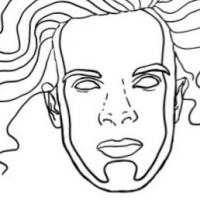Loopy Pro: Create music, your way.
What is Loopy Pro? — Loopy Pro is a powerful, flexible, and intuitive live looper, sampler, clip launcher and DAW for iPhone and iPad. At its core, it allows you to record and layer sounds in real-time to create complex musical arrangements. But it doesn’t stop there—Loopy Pro offers advanced tools to customize your workflow, build dynamic performance setups, and create a seamless connection between instruments, effects, and external gear.
Use it for live looping, sequencing, arranging, mixing, and much more. Whether you're a live performer, a producer, or just experimenting with sound, Loopy Pro helps you take control of your creative process.
Download on the App StoreLoopy Pro is your all-in-one musical toolkit. Try it for free today.



Comments
Holy lord you mad hatter! Did you make this, well either way its insane. I play chapman stick 8 and 10 string and i am studying your chart. Its crazy mental at first look, but i know theory so ill check this out. Thanks dude. You got any music to share. I have an insane amount all free if you want a lead.
Haha yep. Actually this is the tip of the iceberg, I've got charts like this for various different tunings that I use as well as lots of text with accompanying analysis. Pet project of mine that I've been putting together over the last couple of years.
If you want to discuss in any detail then by all means ask here, on my facebook page, or PM me for email address. Always happy to share music and discuss crazy theory ideas!
What have you got against sharps?
Haha, I actually did EADG in flats just for variation. My other charts are with sharps as I generally gravitate to the sharp keys in my alternate tunings. Notating in flats is more 'standard' for general jazz notation/repertoire/theory, so decided to switch it up for standard tuning.
It amazes me that there is no guitar equivalent to ChordPolyPad or the Cubasis chord memorizer. I'm picturing lots of empty fretboards that you could put dots on to make chords (playable and unplayable) and then send the midi out.
You've hit the interesting topic of how to take this 'practical theoretical information' and combine with the iOS world most effectively. It's something I'm thinking about! As if of yet, I've only really considered using it as a compositional foundation in general or experimenting in Navichord.
I don't understand the rightmost column regarding location. What does D1+3 mean?
Those overtones 'note' designations (Ds an octave apart) are the 1st and 3rd overtones of that string.
Ah yes, I've also been thinking of sampling all the upper structures and seeing what fun I can have with them in SECTOR and Samplr.
I'm a bassist and that is quite a chart. I just got back from a difficult sound gig tonight so my brain can't look at that, but I'm going to check it out on vacation next week. Thanks for posting.
Glad to hear that other people are interested in what bizarre theoretical niche rabbit holes I can explore! Harmonics on bass sound great, so hopefully this study (much bigger than just this spreadsheet) can add a few more layers of practicality to the field.
If anyone is interested in collaborating in composition with this area then let me know. I'm eager to keep pushing this further and further in practise so if anyone would like to create remotely using this field, please come forward!
Here's an open invitation:
If anyone is interested to create based on this area of performative/compositional study/analysis (and there is a lot more 'in progress' text and analysis that I can supply inside an ongoing creative process) then I will (for a limited time, on a reasonable basis) record and deliver audio of any requested musical sections provided to me in sheet music, piano roll or any other legitimate notation method, for use in your compositions, royalty free (providing I haven't directly contributed to the composition).
Thks a lot for this !
Hey Oscar, as I still can't grok your diagram, could you say whether you use more harmonics than the ones in this diagram? Just ignore the extra strings.
Short answer: all the pitches available on the E, A, D and G strings in that diagram are considered. One of those noted is not used, but is just an octave up version of one that is considered.
Long answer..
Here's a bit more explanation (the excerpted spreadsheet is a little bare on that front):
On the left is all the different possible combinations of three overtones when considering overtones 1, 2, 3 & 4. I chose to limit it to the first 4 overtones because A) keep the study within workable realm, B ) overtones 5 and 6 are b7 -31cents and 5th(8va), so just one new tone per string and it presents a lot of intonation issues & C) overtones from 5 and up are not so accessible in a wider variety of techniques. I'm using a lot of tapped harmonics so it didn't make sense to include them when considering these three reasons together.
Overtones:
E string:
1: E
2: B
3: E(8va)
4: G#
A string:
1: A
2: E
3: A(8va)
4: C#
D string:
1: D
2: A
3: D(8va)
4: F#
G string:
1: G
2: D
3: G(8va)
4: B
On the right is the locations of those overtones on the bass.
In the centre, all the upper structures chosen are shown in function over each of the 12 possible bass tones.
Everything else is explained in notes and key on the sheet itself.